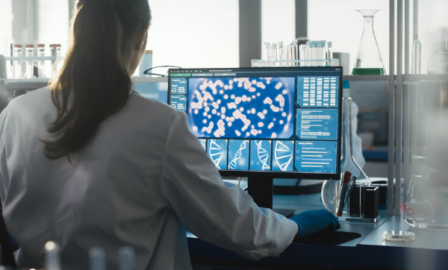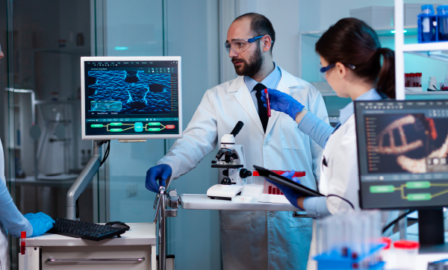Innovation in R&D Processes and Systems
The meticulous art of R&D demands extensive collaboration, mastery of technical skills, and scientific acumen. In and of itself, the R&D processes for developing high potential leads from a mixed bag of compounds is extremely tricky and complex, and failures are an inherent part of the game. Simply put, clinical trials are supposed to take time. Yet, a harsh investment climate and shareholder demands often compel peers in the executive suite to operate on a strict time frame, leaving R&D with the precarious responsibility of producing rapid and high-quality results.
How can R&D Evolve? Process Innovation.
Whether an R&D organization is in its drug discovery phase or amid clinical trials, process innovation has become increasingly critical to product innovation. One of the most challenging and blurry decisions an R&D leader faces is choosing when to allocate necessary resources to process development. Is it a wise investment to spend on tangential processes, IT infrastructure, or more sophisticated documentation platforms if the drug hasn’t been approved?
There have been many instances in which a lack of process development either delayed product launch, detracted from commercial profit, or ruined a company’s prospects altogether. The commonality across these failures is that management underestimated the importance of adopting process technology.
Even in early stages of drug development, investing in innovative processes can pay massive dividends in later stages. Capital investment into material distribution channels or laboratory efficiency early-on can be critical when an organization is required to ramp-up production levels in Phase II and especially Phase III of clinical trials. For instance, low-yielding processes hinder a company’s ability to produce sufficient material to support clinical trials that involve dozens, if not hundreds, of volunteer patients. The result is ultimately schedule delays and unnecessary fire-fighting for R&D leaders.
Tools Organizations Can Use to Upgrade R&D Processes
Electronic Document Management – As R&D processes ramp-up in production levels, traditional paper documentation becomes a cumbersome bottleneck. It’s never too early to transition to an electronic-based document management system. Whether the intent is experimental FDA compliance, inspection readiness, or change control documentation, electronic management is a traceable, seamless, and scalable solution.
Electronic Trial Master File (eTMF) – eTMF solutions can be major assets when implemented correctly. For example, Medidata’s Edge eTMF solution allows users to keep R&D and clinical studies up-to-date with real-time oversight through dashboards that can be accessed through collective cloud storage. As clinical trials yield larger and more complex data files, eTMF solutions can simplify and streamline filing through auto-population, reducing the time of painstaking manual data-entry.
Laboratory Information Management System (LIMS) – Because it is mandatory to submit large data reports to meet regulatory guidance, R&D organizations must take measures to implement a laboratory information management system (LIMS) to ease the process of data curation and allow for greater quality management. There are many cases of organizations that have adopted LIMS and subsequently developed increased process harmonization, production rate, quality, and safety.
Capital investment into material distribution channels or laboratory efficiency early-on can be critical when an organization is required to ramp-up production levels in Phase II and especially Phase III of clinical trials.
The Importance of Calculated Implementation
While waiting too long to upgrade quality processes and systems is a problem, so is upgrading tools that are unnecessary to the essential functions of R&D. What solutions are most beneficial at your current stage of development and which ones can wait? Likewise, implementing a new system or solution across an entire organization can be daunting. Too much emphasis on adaptation and new training modules can detract from the essential functions of R&D. A more efficient and effective method of implementation is a lean approach. By applying a solution to a handful of individual trials instead of an organization-wide initiative can allow for a more natural scale-up process in the future.
How can your R&D organization leverage process development to support innovation? What technologies and solutions fit best with your product pipeline and research strategy? Can your laboratory be made more efficient through the implementation of automated technologies?
For more insights, subscribe below or contact us today.



